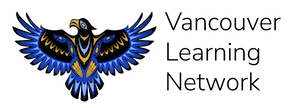Japanese 11
Japanese 11 Course Overview
Big Ideas
Listening and viewing with intent supports our acquisition of a new language. | Language and culture are interconnected and shape our perspective, identity, and voice. | The communicative context determines how we express ourselves. | Exploring diverse forms of cultural expression promotes greater understanding of our own cultural identity. | Developing proficiency in a new language provides unique opportunities for careers, travel, personal growth, and study abroad. |
From: https://curriculum.gov.bc.ca/curriculum/languages/11/japanese
Introduction
While this course is relatively short, compared with Introductory 11 and Japanese 12, it builds seamlessly from Introductory Japanese 11, and introduces foundational grammar. Helping students to understand Japanese culture and to get around in Japan is emphasized.
Where does this course fit?
- Prerequisites: Introductory Japanese 11 or Japanese 10
- Graduation Status: Elective for graduation
- Japanese 12 comes after Japanese 11 and is the highest course one can take in Secondary Schools in BC, other than IB or Advanced Placement courses.
Course Materials
- While the text for the course is provided digitally, students may borrow a physical text from the VLN library. You must have access to a computer.
Brief Outline
Unit | Description |
Module 1 | Short forms and uses of short forms; Asking people not to do things; ’I like doing. . .’; ‘anything/nothing’; Use of ‘ga’ |
Module 2 | Past tense short forms; Qualifying Nouns with Verbs and Adjectives; ‘I’m not doing something yet’; ‘from’; Colors |
Module 3 | Comparison; Adjective/noun plus ‘no’; I intend to. . .; Adjective plus ‘naru’; Anywhere/nowhere; Uses of ‘de’ |
Module 4 | ‘Want to/desire’; ‘tari--tari suru’;’I have had the experience of. . .’; ‘Noun A ya Noun B’ |
Module 5 | Giving explanations; ‘too much’; ‘It would be better to. . .’; because ‘node’; ‘must not’; Asking for agreement |
Assessment Percentage Breakdown
Assessment Type | Percentage of the Course |
Assignments (5) | 14% |
Discussions | 10% |
Conversation Log | 1.5% |
Online Quiz | 5% |
Oral Exams (2) | 15% |
Midterm and Final Exam | 40% |
Cultural Projects (3) | 14.5% |
You have up to a year to complete your course.

